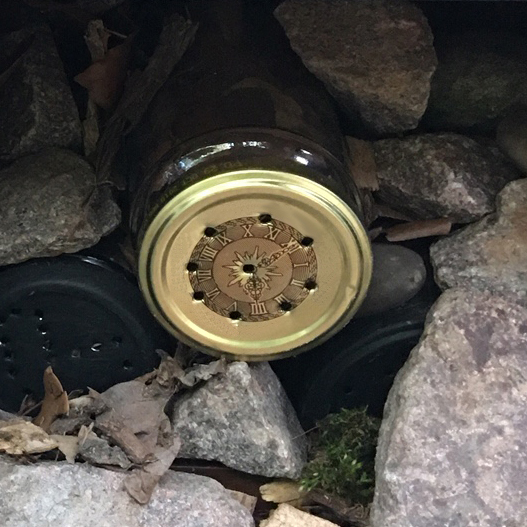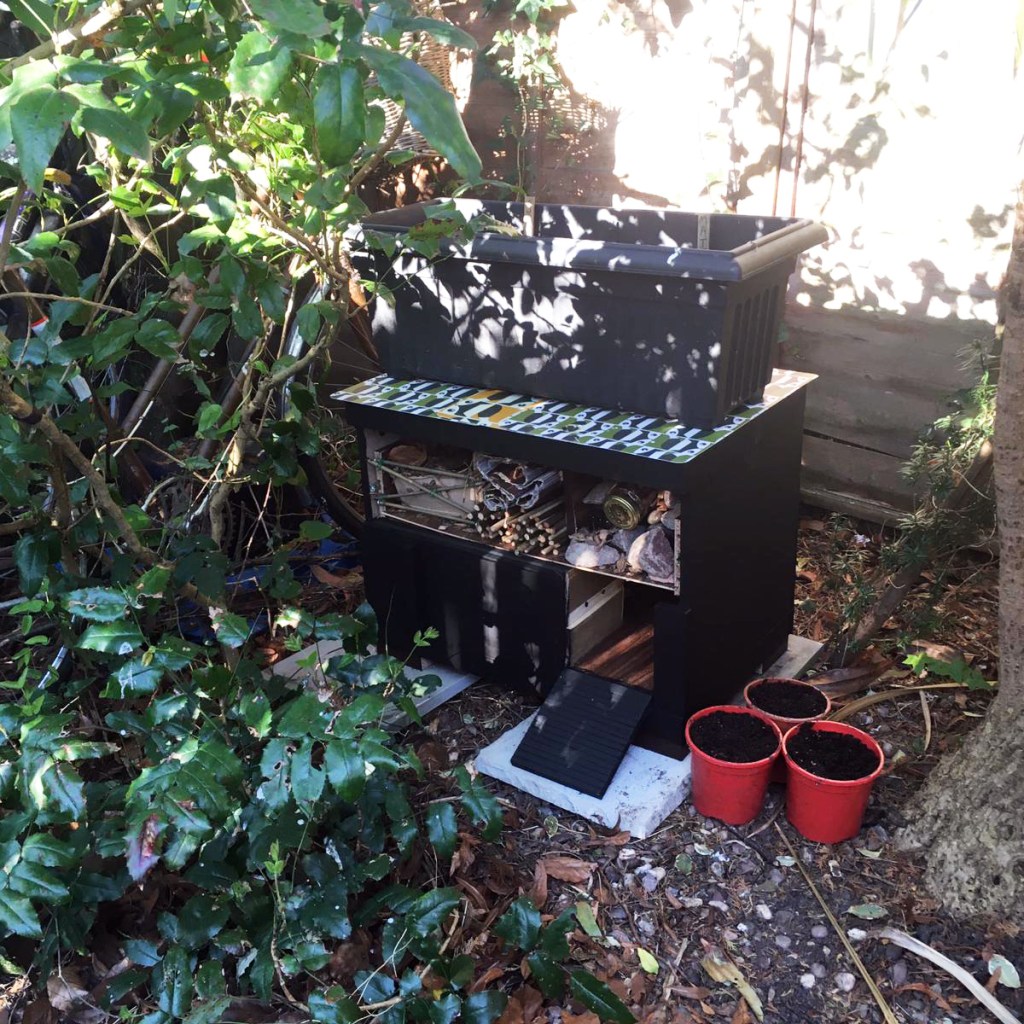Even a small garden can provide a home for several thousand species of insects and other minibeasts.

Credit S Steele
Although a very small minority may not be popular guests, the vast majority will undertake important natural processes and improve the health of your garden. Many will pollinate your plants, break down decaying material to fertilise your soil and even eat the few ‘pests’ that may be causing you some bother. By providing a range of different habitats in your garden you can help encourage more of these beneficial insects to move in.

One way to do this is by building an insect hotel. Read about how Museum learning assistant Sara and researcher Matt built one from items found in the home, garden and local green spaces:

We used an old set of drawers as our base, but you can use anything that will withstand the weather; stacked wooden boxes, flowerpots, or shaped wire mesh. The Wildlife Trust recommends wooden pallets for an easy-to-build shelf-style ‘insect mansion’.
Divide your base into sections to enable you to create several different spaces and encourage insect diversity. Decide on the insects or invertebrates that you would like to cater for, and design the sections accordingly.
Peer into the undergrowth

Undergrowth species such as woodlice, millipedes, snails, slugs, ground and rove beetles like their environment to be damp. Layer some soil with dried leaves and woodchips for a perfect ‘above-ground’ undergrowth habitat.
We used bamboo to make a small ‘fence’, but wire mesh or tied-together sticks will help to keep the soil and debris in place.
From Bees to Beetles
This section will encourage important pollinators and pest-eaters into your garden.

Stacked bamboo and wood scraps provide a welcome nesting place for solitary bees such as red mason bees. The wood scraps provide material for wasps who chew this up to create the ‘paper’ from which their homes are built. The spaces between the materials will also provide a dry, sheltered, safe space to spend the winter months for beetles such as ladybirds.
Top tip: keep this section dry to prevent mould growth.
The messy pile
Our final section is a mixture of stones, dry leaves, moss, and jars full of woodchips.

This combination is a great set-up for wolf spiders, devil’s coach horse beetles, flat-backed millipedes, and more.
We filled old glass jars with woodchips and punched holes into the lid to create a space for smaller invertebrates needing a more sheltered home.
Top tip: angle the jars downward to prevent rain flooding the insides.
Top tips:
- Dry out your materials before filling the sections. This will prevent mould growth, providing the best accommodation for your intended residents.
- Place your insect hotel in a dry, sheltered space.
- Protect it from the elements. We have reused old wipe-down placemats to help keep the rain off.
- Turn your hotel into a ‘bed and breakfast’ by planting their favourite food-plants. The Wildlife Trust offers great advice on how to garden for wildlife in lots of different shapes or types of spaces here.

Ours is placed in a shaded spot that receives partial sunlight. The pots surrounding the hotel are full of wildflower seeds to encourage butterflies to visit.
Our gardening for butterflies post contains all you need to do this in your own outside space.
Share images of your wildlife welcomes with us on Facebook, Twitter, or Instagram by tagging us or using #OpenYourWindowBingo
Return to our blog later to find out how we turned the lower storey into a home fit for a hedgehog.
Find out more:
Wildlife Trust – How to make a bee hotel


9 thoughts on “A warm welcome for minibeasts”